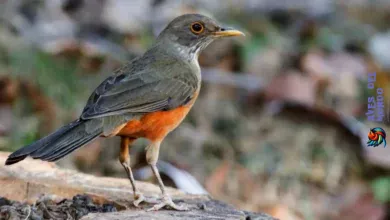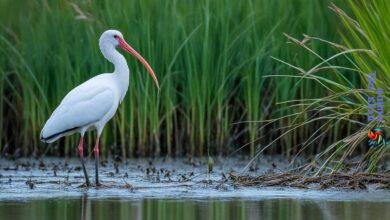Did you know that swifts spend most of their lives in the air, landing only to nest? This is just one of the compelling swifts facts that illustrate the mesmerizing existence of these avian specialists.
Belonging to the Apodidae family, swifts are true to their name with an incomparable ability to navigate skies with astonishing speed and stamina. When you look up to the heavens and glimpse a bird slicing through the air, consider the swifts birds, nature’s very own fighter jets, masters of high-velocity maneuvers.

In the diverse landscapes of Nepal, swifts find a perfect refuge, from the lush subtropical forests to soaring alpine zones. They possess streamlined bodies and long narrow wings, fine-tuned for life predominantly off the ground. Unlike swallows, swifts birds boast sharp, hooked bills, a physical adaptation that allows them to snatch insects right out of the air with precision. As you delve into the swifts’ world, prepare to be captivated by their prowess and the cultural tapestry that threads through their existence.
Introduction to the Swifts: Masters of the Sky
Swifts are among the most enigmatic creatures of the avian world, incredibly adapted to life at remarkable heights. Their aerodynamic bodies allow them to perform sensational feats while jetting across the sky. In this section, we’ll dive into the unique characteristics that distinguish swifts from their avian counterparts and ensure their dominion above the clouds.
Defining Characteristics of Swifts

Swifts possess several distinctive traits that epitomize their aerial proficiency. Their swifts nesting habits are a marvel of nature, with nests ingeniously constructed in sheltered, often vertical environments like cliff faces and urban structures. Their hooked bills are instrumental in plucking insects from the air, a critical aspect of the swifts diet that sustains their high-energy lifestyle. But what stands out the most is their silhouette in flight—a spectacle of power and grace that defines their mastery of the skies.
Swifts vs. Swallows: Understanding the Differences
Though frequently mistaken for swallows due to their dynamic flight patterns and body shapes, swifts are singular in their capabilities. Swallows may skim the sky, but swifts truly own it. The swifts habitat range is broad, spanning across continents, which allows swifts to display their unmatched endurance and agility. With a life that’s largely airborne, swifts seldom rest, pushing the boundaries of what it means to live life on the wing.
Let’s examine a comparison between swifts and swallows, to highlight the unique attributes of these sky masters:
| Characteristic | Swifts | Swallows |
|---|---|---|
| Nesting Habits | High altitudes, often on cliffs or buildings | Lower heights, typically near water or open fields |
| Diet | Almost exclusively insects caught in flight | Insects, occasionally supplemented with berries |
| Habitat | Wide range including urban areas to mountains | Open and semi-open landscapes, farmland |
| Flight Pattern | Powerful and high-speed with continuous gliding | Agile with more frequent wingbeats and perching |
As you can see, while both swifts and swallows share similarities in their lifestyles, it’s their adaptability and indomitable spirit that enable swifts to soar higher and further than any other bird in its category. Knowing the nuances of their nesting practices, dietary needs, and preferred environments enriches our understanding and appreciation of these exceptional aviators.
Next time you gaze up at the sky and witness a bird slicing through the air with precision and speed, look closely—it may just be a swift demonstrating why they are the true masters of the sky. Embodying freedom and prowess, swifts continue to captivate and inspire us with their life above the horizon.
Swifts: An Avian Spectacle in Nepalese Skies
Nepal, a country rich in natural diversity, offers a breathtaking backdrop for the drama of aerial acrobats – the swifts. These birds grace the Nepalese skies with their agile maneuvers, symbolizing the essence of freedom and the complexities of nature’s design. Your interest in swifts conservation can make a difference in protecting swifts and securing their future in this region.
As a nation comprised of terrains that vary from lush subtropical to harsh alpine, Nepal provides a veritable playground for different species of swifts. This variety of habitats invites a remarkable diversity of swifts to thrive, each uniquely adapted to the country’s varied climate zones.
Species Variety Amidst Nepal’s Diverse Climates
The rich tapestry of Nepal’s habitats hosts a range of swift species. Among them, the House Swift (Apus nipalensis), the White-throated Needletail (Hirundapus caudacutus), and the Alpine Swift (Tachymarptis melba) stand out as illustrations of nature’s adaptability and elegance. These swifts navigate the complexity of environments, from the urban edges to the sheer faces of mountain cliffs, with remarkable ease.
Adaptations for High-Altitude Flight
Adept at high-altitude flight, swifts exhibit unique physiological adaptations that enable them to navigate Nepal’s demanding skies. Such attributes are not just curiosities — they serve as critical survival traits that allow these birds to hunt insects mid-flight and withstand the thin air found at higher elevations.
| Swift Species | Notable Adaptation | Typical Habitat |
|---|---|---|
| House Swift | Efficient respiratory system | Urban and Suburban areas |
| White-throated Needletail | Robust wing muscles for sustained flight | Open skies near forests |
| Alpine Swift | High aspect ratio wings for dynamic soaring | Mountainous Regions |
By understanding the habitats and adaptations of these swift species, you are better equipped to participate in swifts conservation efforts. Protecting swifts in Nepal is not just about safeguarding a species; it’s about preserving an irreplaceable spectacle that once lost, can never be reclaimed. Your engagement in these efforts, whether by raising awareness or supporting conservation initiatives, can help maintain the avian diversity that decorates Nepalese skies.
The Remarkable Migration Journey of Swifts
Each year, with the approach of the swifts breeding season, a stunning natural event unfolds across our skies. As the warm currents start to rise, so does the anticipation for one of nature’s most exceptional phenomena: the swifts migration. These avian acrobats depart from the sun-drenched landscapes of Africa, venturing towards Europe and beyond, charting a course filled with arduous trials and awe-inspiring endurance.

Why do swifts embark on such an ambitious journey annually? It is the innate call to return to their ancestral breeding grounds; an instinct honed across countless generations. During this critical period in their life cycle, swifts fly vast distances to find the perfect locale for raising their young, ensuring the survival and continuation of their species.
“The migration of swifts isn’t merely a seasonal event, it’s a spectacular display of persistence, precision, and strength. As they crisscross continents, they stitch the fabric of ecosystems together.”

Let’s delve into some remarkable details that highlight the tenacity of these birds during their migratory passage:
- Traversing challenging weather conditions, swifts demonstrate exceptional navigational skills, often covering up to 500 miles a day.
- The communal roosts of swifts during migration are a testament to their collective resilience and the importance of social structures within their species.
- The synchronization of swifts’ migratory paths with the swifts breeding season is a testament to their adaptability and evolutionary intelligence.
Beyond enchanting the casual observer, the swifts’ migratory habits are of keen interest to ornithologists and conservationists alike. Protecting these migratory corridors is vital not only for the swifts but also for maintaining the ecological equilibrium across continents.
| Flight Distance (average) | Duration of Flight | Breeding Ground Arrival |
|---|---|---|
| 6,000-7,000 miles | Approx. 3 months | Late spring to early summer |
| Elevation Range | Average Daily Distance | Breeding Success Rate* |
| Varies from sea level to 10,000 feet | 200-500 miles | Dependent on habitat quality |
*Breeding success rate refers to the number of young swifts that survive to fledge.
Your connection to this spectacular avian journey does not have to be passive. By fostering safe environments and supporting conservation efforts focused on preserving key habitats for the swifts you can ensure that this incredible migration continues to be a defining symbol of the interconnectivity within our natural world.
Nesting Habits: A Glimpse into Swifts’ Architectural Marvels
Delve into the fascinating swifts nesting habits, where each design reflects nature’s genius during the swifts breeding season. With each return from their migratory journey, swifts are immediately faced with the task of constructing their temporary homes, a task they approach with both precision and creativity.
Crafting Nests from Saliva and Debris
Experts in nest-building, swifts utilize a mixture of organic materials and their own saliva to create durable nests. Found clinging to vertical surfaces, these structures are a testament to the birds’ ingenuity. During the swifts breeding season, these nests not only offer shelter but also play a crucial role in the incubation and rearing of the young swifts.
Monogamy and Mate Fidelity Among Swifts
The swifts nesting habits are further underscored by their monogamous relationships, which can span many breeding seasons. This monogamy facilitates exceptional coordination and fidelity between partners, ultimately enhancing the survival of their progeny. A strong bond is central to enduring the swifts breeding season year after year, leading to successful reproduction and chick rearing.
| Nesting Material | Location Preference | Role in Chick Development |
|---|---|---|
| Moss and feathers | Cliffs and building crevices | Insulation and support |
| Saliva (as a binding agent) | Protected ledges | Structural integrity |
| Twigs and debris | High altitudes and urban structures | Foundation and camouflage |
The Diet of Swifts: Masters of Insect Capture
Considered avian insectivores, swifts exhibit a fascinating dietary preference that aligns perfectly with their life in the skies. At the heart of the swifts diet are a wide array of insects that these birds tactically capture during flight. The hooked bills that swifts possess are not merely a distinctive physical feature; they serve as a specialized tool for snaring their prey mid-air with remarkable precision.
What’s on the menu for these agile hunters? Let’s explore the typical swifts diet closer:
- Flying ants, which often take to the air in large numbers, provide a plentiful feast for swifts during mating flights.
- Beetles, with their hard shells, are no match for the swifts’ speed and agility.
- Spiders, despite not being traditional ‘fliers,’ often get caught in updrafts and become airborne enough for swifts to capture.
- Flies of various species are a common sight in a swift’s diet, thanks to their omnipresence in the air.
- Mosquitoes, a nuisance to many, serve as a dietary staple for these birds, assisting in natural pest control.
- Wasps and bees, with their high-energy flights, are energetically profitable prey for swifts.
Observers can marvel at the sight of swifts in action—dancing through the air as they partake in their acrobatic insect pursuit. This relentless chase of flying insects is not just a survival mechanism but an environmental boon, keeping insect populations in check. Given how integral insects are to the swifts diet, it’s clear that preserving their airborne buffet is crucial for their survival—and that’s a reason why areas rich with insect life are so important for these aerial experts.
Understanding the swifts diet offers insight into the ecological role they play and underscores the importance of habitats conducive to both the swifts and their prey. By maintaining environments where insects thrive, we indirectly support the swifts, ensuring they continue to soar on their airborne hunts, mesmerizing onlookers with their impressive aerial acrobatics.
Conservation Challenges: Protecting the Swifts
As admirers of the aerial ballet swifts perform in our skies, it is essential to turn our attention to their plight on the ground. With their populations waning, efforts to ensure swifts conservation have become more crucial than ever. Whether you are a bird enthusiast or a nature advocate, understanding and protecting swifts involves recognizing the challenges they face and the actions we can implement to aid in their survival.
The Decline of Swift Populations
The once abundant swifts are experiencing a concerning decline across the globe. This decline is a red flag for environmentalists and ornithologists alike, signaling underlying issues in our ecosystems. Habitat loss, largely a consequence of rapid urban development, alongside deforestation, has stripped swifts of their natural breeding and nesting sites. The reduction in insect populations, their primary food source, due to pesticide use, further exacerbates the problem for these insectivorous birds. It is imperative to combine our efforts towards protecting swifts before the silence replaces their characteristic swift song in our skies.
Conservation Efforts in the UK and Europe
In the UK and across Europe, swifts conservation is gaining momentum with initiatives that inspire hope. Enthusiasts and wildlife organizations are pushing for changes, pioneering various projects focused on safeguarding swifts. They’re devising practical solutions, such as installing swift nest boxes on buildings and creating ‘swift towers,’ dedicated structures that provide artificial nesting sites for these fast flyers. Further efforts include policy advocacy for bird-friendly building designs, preservation of old structures known to host swift colonies, and public education campaigns. These collective actions embody the dedication to protect swifts, nurturing the numbers back to robust health.
Community Actions: Local Efforts to Save Swifts
As the city of Sheffield embraces its identity as a ‘Swift City,’ there is a noticeable rise in collective action aimed at preserving the vital swifts habitat. Community initiatives have become a beacon of hope for swift populations that are facing severe decline. These local efforts are a testament to how groups of dedicated individuals can make significant strides in wildlife conservation.
The Sheffield Swift Network: A Collective Endeavor
In the heart of Sheffield, swifts conservation groups are thriving, thanks in large part to the Sheffield Swift Network. This organization has united residents and nature enthusiasts in the shared goal of safeguarding the swifts. By installing nesting boxes and swift bricks, they provide essential resources for swifts to thrive even in urban landscapes. These installations mirror the swifts’ natural nesting preferences and are critical in the fight to maintain their presence in the city.
The dedication of volunteers is clear as they meticulously monitor and manage the conservation activities, contributing to the stability of the swifts’ habitat. These efforts not only support the immediate needs of the swifts but also foster long-term sustainability through advocacy for swift-friendly urban planning policies. It is this proactive approach that helps ensure the swifts remain an integral part of Sheffield’s wildlife.
The Sheffield Swift Network’s efforts outline the powerful impact that unified community actions can have on wildlife conservation. By focusing on strategies like habitat creation and protection, swifts conservation groups help preserve these remarkable birds for future generations to marvel at and enjoy.
Integrating Swift-Friendly Structures in Urban Planning

As cities expand, the importance of protecting swifts becomes ever more critical. Their natural abodes under threat, urban landscapes are being transformed into swift-friendly environments.
Consideration of swifts habitat necessities is now an integral part of forward-thinking urban design, ensuring these aerial sprites continue to dance in our skies. Innovations in architecture have paved the way for seamlessly blending conservation with modern construction, a testament to what humanity can achieve when we harmonize with nature.
Amid a surge in building renovations and urbanization, traditional nesting sites of swifts are disappearing at an alarming rate. Now, architects and planners are embedding specialized bricks and nesting boxes into new structures. This principle of protecting swifts by preserving their habitat within the fabric of urban infrastructure is paramount to their survival and the health of our ecosystems.
| Feature | Benefit to Swifts | Benefit to Communities |
|---|---|---|
| Swift Bricks | Simulate natural crevices for nesting | Maintain aesthetic appeal of buildings |
| Nesting Boxes | Offer a safe breeding environment | Encourage biodiversity in urban areas |
| Green Roofs | Provide additional foraging grounds | Improve air quality and community space |
As you contemplate these advancements in urban development, take a moment to visualize cities thriving in harmony with nature’s rhythms—a place where the majestic flight of swifts inspires our designs. Knowing that each structure contributes to protecting swifts and enhances our swifts habitat is a compelling reason to support and encourage these practices. Together, we can forge a future where wildlife and humanity share an urban canvas, thriving side by side.
Monitoring Swift Population: Citizen Science in Action
The role of citizen scientists is indispensable in the realm of swift conservation. By meticulously documenting swifts migration patterns and breeding sites, these dedicated volunteers contribute vast amounts of data pivotal to the swifts conservation efforts. Your participation as a citizen scientist can make a significant impact on the future of these dynamic birds.

Utilizing tools like the Sheffield Swift City Map, you can track the swifts’ flight paths and stopover points to paint a clearer picture of their migratory habits. This information is crucial for identifying key habitats that require conservation and implementing strategies that support swift populations.
Witnessing the incredible journey of the swifts can inspire a deeper appreciation for these avian wonders and a stronger commitment to their preservation.
Below is a table illustrating how the data collected through citizen science has aided swift conservation:
| Data Collected | Impact on Conservation |
|---|---|
| Number of nesting sites | Assess the health of swift populations in specific areas |
| Migratory arrival and departure dates | Insight into shifts due to climate change or habitat loss |
| Breeding success rates | Evaluate the effectiveness of conservation measures |
| Frequency of seen swifts in urban areas | Understand the influence of urbanization on swift habitats |
By engaging in swift conservation today, you ensure that the sky will continue to be graced by the swifts’ awe-inspiring acrobatics for generations to come.
Joining the Cause: How You Can Help Swifts Thrive
As someone who holds an interest in the future of wildlife, your role in swifts conservation is paramount. There is a profound connection between our actions and the fate of these incredible flying creatures, particularly during the swifts breeding season. It’s a time when swifts are most vulnerable and in need of safe environments to raise the next generation. By getting involved in simple yet impactful conservation activities, you can help to ensure that swifts continue to grace our skies.
Installing Swift Nesting Boxes
One of the most direct methods you can contribute to swifts conservation is by installing nesting boxes. These artificial shelters provide swifts with a safe space to lay their eggs and rear their chicks, especially in urban areas where traditional nesting sites might be scarce. You’re not just giving them a home; you’re securing a future for these birds within your community.
Participating in Swift Conservation Groups
Joining local swift conservation groups is another invaluable way to contribute. These groups are at the forefront of promoting awareness and orchestrating habitat restoration initiatives. They offer a wealth of knowledge and strategies on protecting swifts, particularly during the breeding season when their efforts are most critical.
| Action | Impact on Swifts | How to Get Involved |
|---|---|---|
| Installing Nesting Boxes | Provides secure breeding sites during swifts breeding season | Buy or build a swift nesting box; place it under eaves or on a high wall |
| Joining Conservation Groups | Helps raise awareness and funds for swifts conservation | Sign up for local community groups or online forums dedicated to swifts conservation |
| Education and Outreach | Increases public knowledge on the importance of protecting swifts | Attend workshops, share information with friends and family, or volunteer for speaking events |
Through these collective efforts, the future of swifts in our skies can be bright. Your participation can make a real difference in ensuring these magnificent birds continue to thrive for generations to come.
Connecting with Swifts: Appreciating These Aerial Acrobats
Immersing yourself in the world of swifts is akin to unlocking a panorama of aerial prowess and intricate lifestyles that span the globe. These swift aviators showcase extraordinary swifts nesting habits by constructing their remarkable dwelling spaces high on cliff faces or the eaves of urban architecture.

The diligence and artistry involved in these constructions are emblematic of their dedication to survival and continuity of the species. By familiarizing yourself with these habits and the intriguing swifts facts, you become a part of a global community set on safeguarding these birds.
Your understanding of the swifts’ migratory patterns sheds light on the incredible stamina and precision of these creatures as they traverse vast distances during their seasonal flights. As you grasp the dimensions of their world—a world dictated by the need for efficient flight and acrobatic agility in catching prey midair—you begin to appreciate the complexity of their existence. Awareness of these facts not only enriches your knowledge but also empowers you to contribute meaningfully to conversations and actions centered on avian conservation.
By learning about the swifts’ diet, predominantly a wide range of airborne insects, you gain insights into the ecological role these birds play in natural pest control. This ecological perspective illustrates the interconnectedness of species within our shared environment.
As you watch these birds slice through the sky with enviable ease, consider how your advocacy for swift conservation can make a difference. Support local habitat enhancement initiatives, and you become an integral part of the movement to sustain the grace of swifts in our skies for generations to come.



